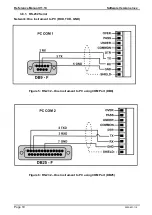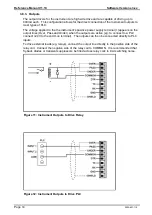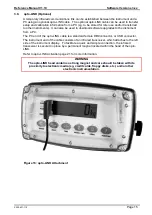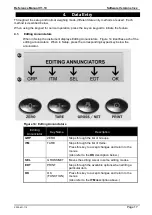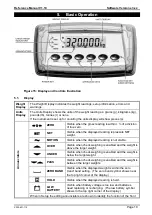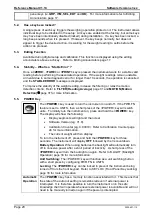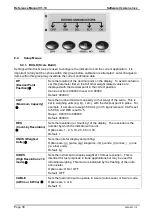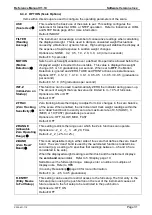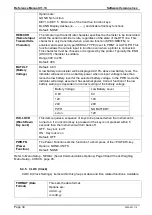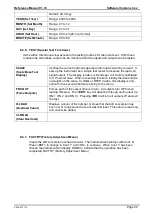
Reference Manual V1.10
Software Versions 3.xx
Page 24
X300-621-110
Calculating the full
scale signal (load
cell):
Since the
instrument
uses 5V load cell
excitation, the
absolute signal
voltage is:
Calculating the
signal resolution:
6.3.
Filtering Techniques
There is a trade off between noise filtering and the step-response time of the system. The step-
response is defined as the time between placing a weight on the scale and the correct stable weight
reading being displayed. This does not affect the number of readings per second that are taken. It
simply defines the amount of time that is required to determine a final weight reading.
The
FILTER
setting in the instrument setup shows the amount of time over which the averaging is
taken. Increasing the averaging time will result in a more stable reading but will extend the time it
takes the instrument to settle to a final reading. Refer to
page 31.
6.4.
Industrial vs OIML and NTEP Modes
Instruments may be operated in Industrial, OIML, or NTEP modes depending on the application
firmware. The OIML, and NTEP modes restrict certain aspects of the operation of the instrument to
ensure compliance with the respective trade certified standards. For more information refer to the
Calibration Counter section below and also to the USE
section page 31 for setup information. The following table lists the operation
differences for each of these modes.
Element
Industrial
OIML
NTEP
Underload
–105% of full scale
–1% or –2% of full scale
depending on zero range
setting
–1% or –2% of full scale
depending on zero range
setting
Overload
105% of full scale
Full scale +9 divisions
105% of full scale
Tare
No restrictions on Tare
Tare values must be > 0
Tare values must be > 0
and rounded to the
nearest graduation
Test Modes
Unlimited time allowed
Limited to five seconds
Limited to five seconds
Table 1: Industrial vs OIML and NTEP Modes
6.5.
Calibration Counter
Within the
setup there are a number of critical steps that can affect the calibration and/or legal for
trade performance of the instrument. If any of these steps are altered, the trade certification of the
scale could be voided.
The instrument
provides built-in calibration counter(s) to monitor the number of times the critical
steps are altered. The value of the counter(s) is stored within the instrument and can only be reset at
the factory. Each time a critical step is altered, the counter(s) will increase by one. Whenever the
instrument is powered up, or setup mode is entered/exited, the current value in the counter(s) is
displayed briefly (eg. C00010).

